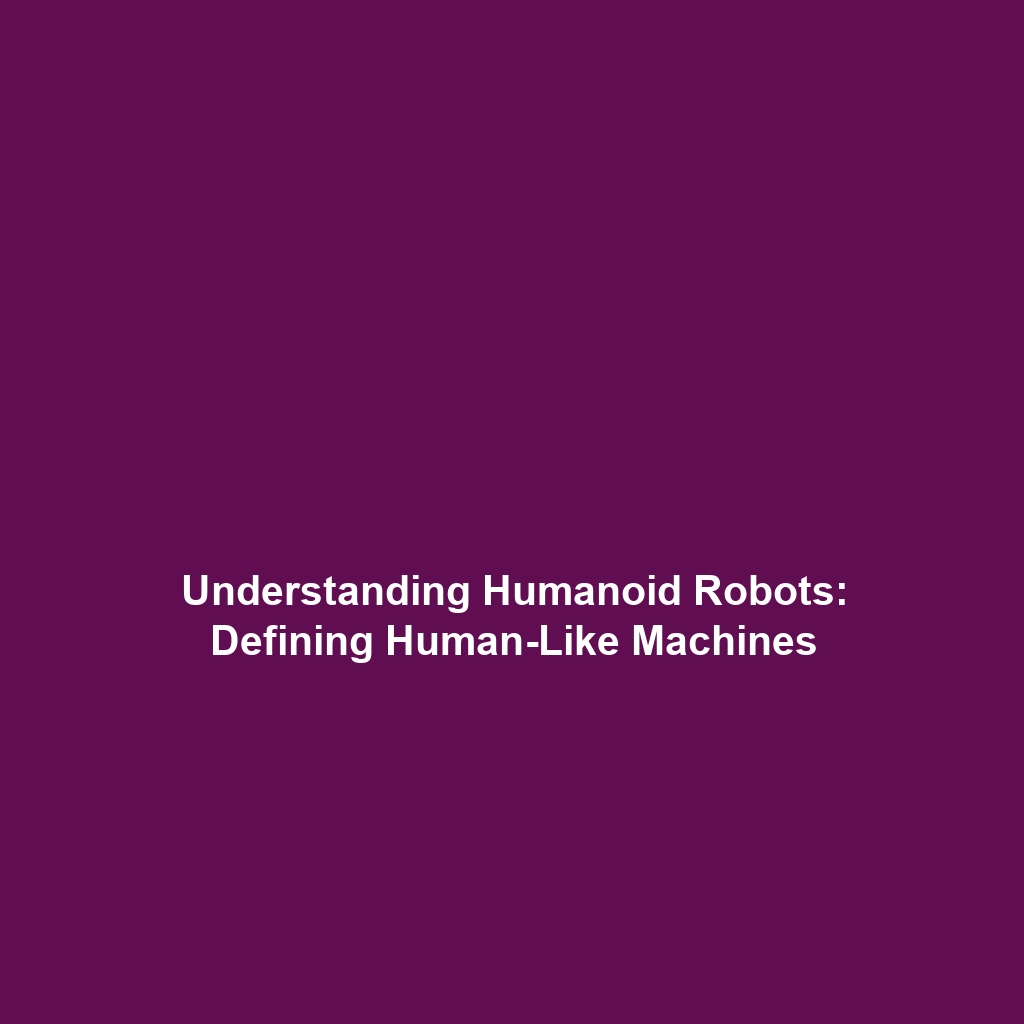Definition and Overview: Robots Designed to Mimic Human Form and Movement
Introduction
Humanoid robots are a remarkable category of technology designed to emulate human form and movement. These robots are significant not only for their ability to perform tasks akin to humans but also for their profound implications in fields such as robotics, artificial intelligence, and human-robot interaction. By mimicking human physical characteristics and behaviors, humanoid robots enhance our understanding of robotics and push the boundaries of technological innovation. This article delves into the definition and overview of humanoid robots, examining their key concepts, applications, challenges, and future prospects.
Key Concepts
Humanoid robots embody a variety of major concepts and principles that contribute to their design and functionality:
Human-like Structure
The fundamental aspect of humanoid robots is their human-like structure, which includes a head, torso, arms, and legs, allowing for a range of motions similar to those of people.
Movement Mimicry
These robots utilize advanced mechanics and algorithms to replicate human movements, making them capable of performing tasks such as walking, grasping, and facial expressions.
Artificial Intelligence
Many humanoid robots are integrated with artificial intelligence that enables them to learn from their environments, interact with humans, and adapt to various scenarios.
Applications and Real-World Uses
The practical uses of humanoid robots are wide-ranging and showcase their potential in various sectors:
- Social Interaction: Humanoid robots serve as companions in elder care and therapy, providing emotional support.
- Education: They are used as teaching assistants, helping to engage students in learning through interaction.
- Research and Development: In laboratories, they help researchers understand human mobility by providing a physical model for experiments.
- Manufacturing: Some humanoid robots are employed in assembly lines to handle tasks that require dexterity and precision.
Current Challenges
Despite their advancements, there are several challenges and limitations in the application of robots designed to mimic human form and movement:
- Technological Limitations: Current humanoid robots often struggle with balancing and coordinating movements, making them less efficient in dynamic environments.
- Cost of Production: Developing and maintaining humanoid robots can be significantly expensive, limiting their accessibility.
- Sociocultural Acceptance: Some people may be hesitant to interact with humanoid robots due to concerns about privacy and ethical implications.
- Integrated Intelligence: The integration of AI into humanoid robots is still in its early stages and faces challenges related to unpredictability and decision-making.
Future Research and Innovations
The future of humanoid robots looks promising, with various innovations underway:
- Enhanced AI: Future research aims to develop more sophisticated artificial intelligence to enable humanoid robots to make informed decisions.
- Improved Mobility: Innovations in materials and design will likely lead to better agility and balance in humanoid robots.
- Collaboration with Humans: As robots become more interactive, research will focus on creating more natural communication methods between humans and robots.
- Integration in Daily Life: Future humanoid robots may seamlessly integrate into homes and workplaces, assisting with daily tasks.
Conclusion
In summary, robots designed to mimic human form and movement represent a vital segment of humanoid robotics. Their advanced functions and potential applications underscore their significance in various sectors. As challenges are addressed and innovations emerge, the future of humanoid robots promises exciting developments that could reshape human-robot interaction. For those interested in exploring humanoid robots further, consider reading more about current projects and breakthroughs in the field of robotics.
